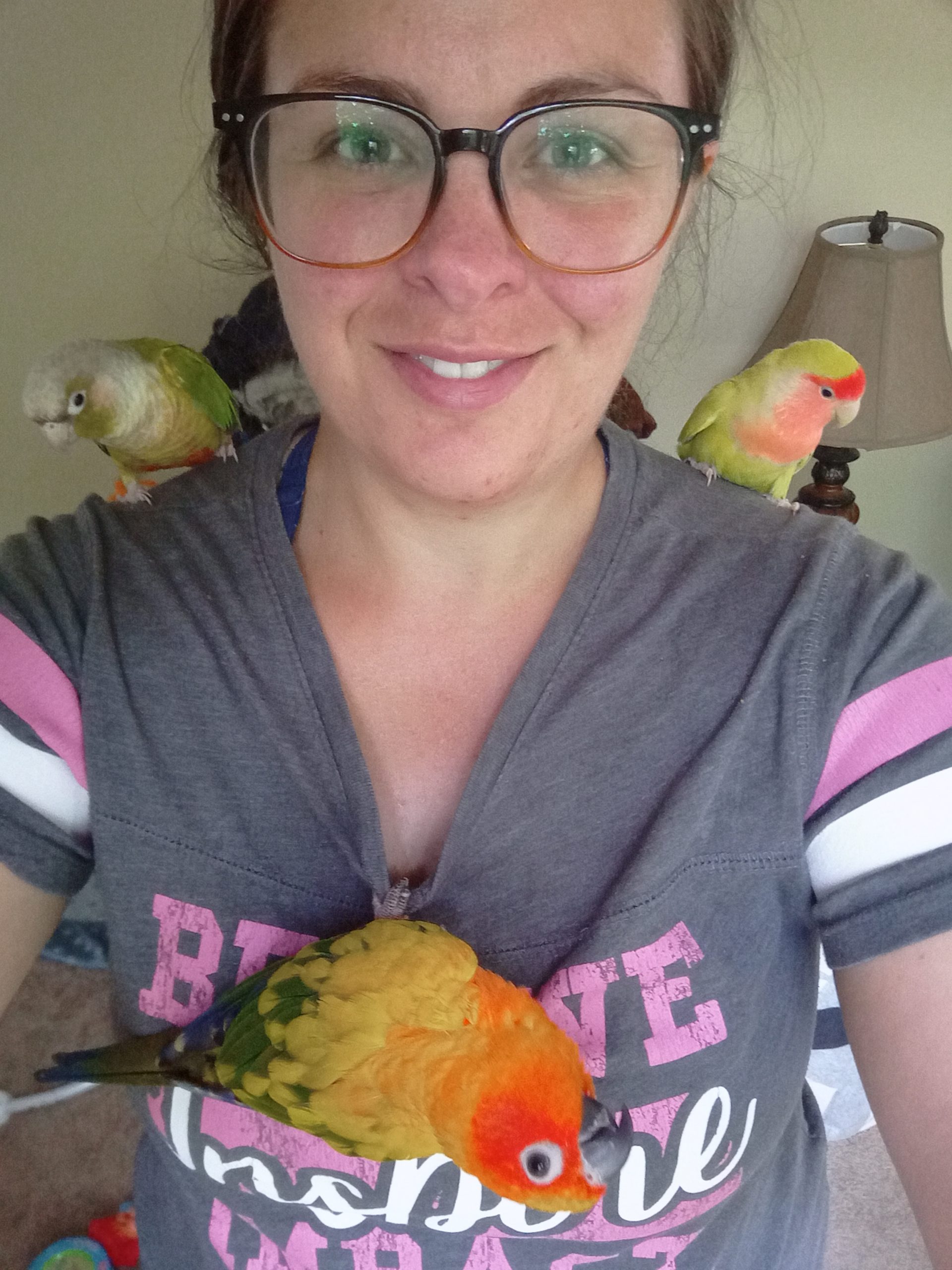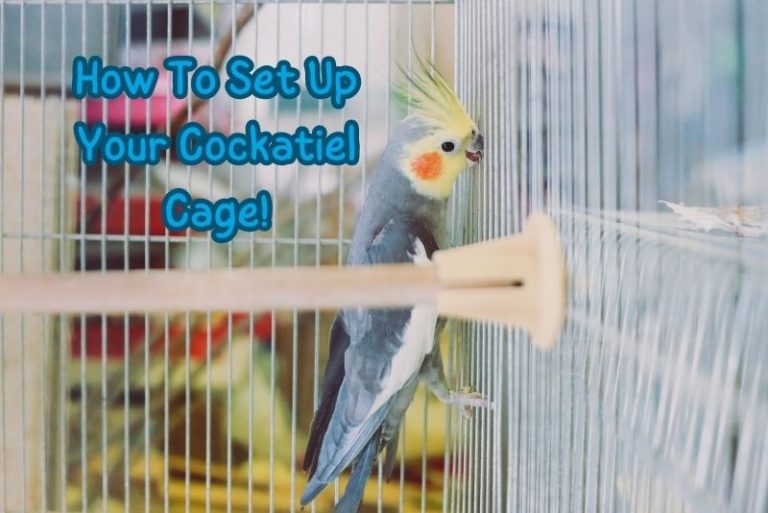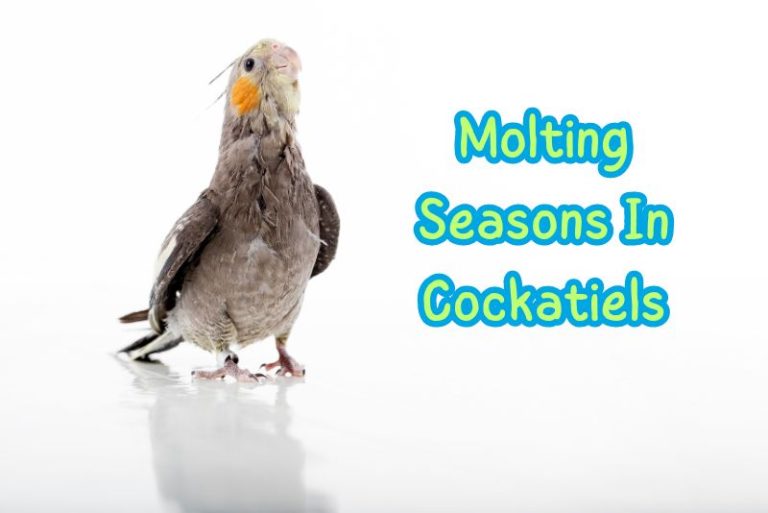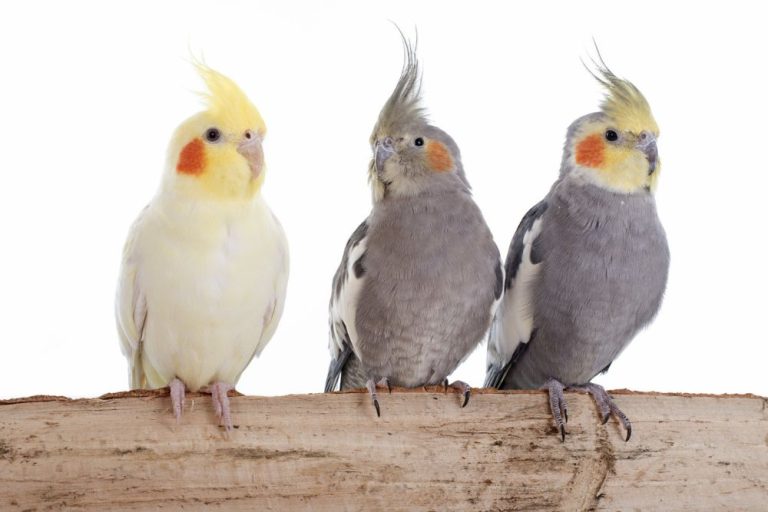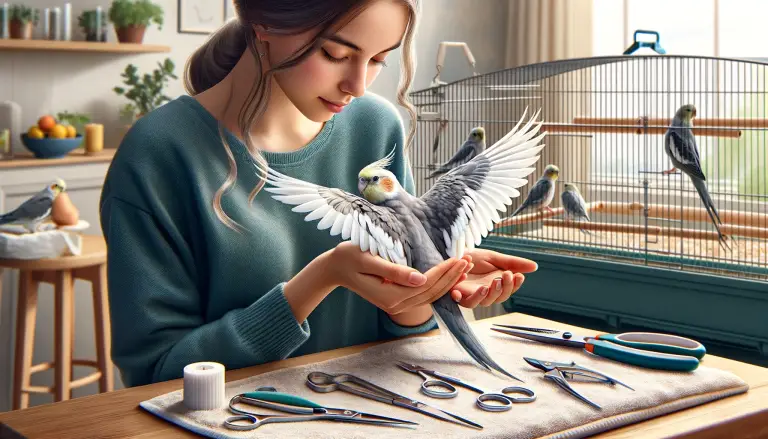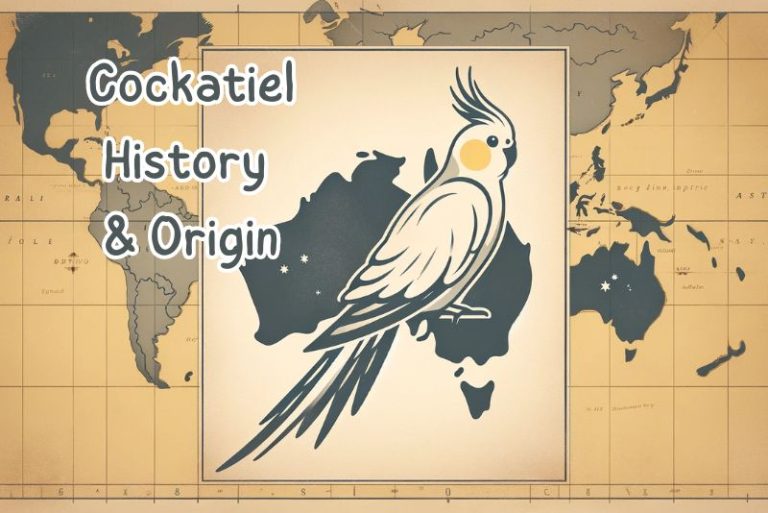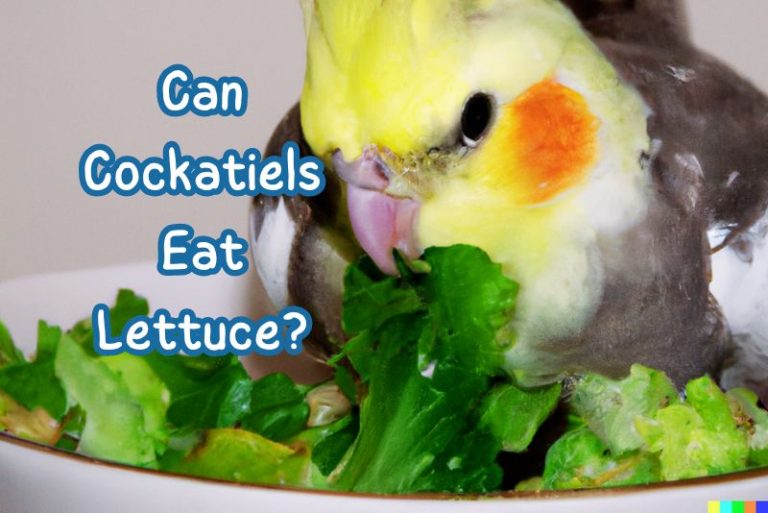Hey, bird lovers! Let’s talk about cockatiels, those cute and social birds that’ve won the hearts of pet owners everywhere. Picture this: a charming crest, cheeks glowing like little tangerine sunsets, and a mix of grey and yellow feathers. Sound adorable? That’s a cockatiel for ya!
So, why are cockatiels so great? They’re not just eye-candy. These birds are social creatures that love hanging out with you. Plus, they’re way easier to care for than some of their bigger relatives like cockatoos.
Still, let’s not wing it, okay? Having a cockatiel is fun but there are some must-dos to keep your bird happy and healthy. We’re talking home, food, and how to keep their minds sharp and tails wagging—well, you get the idea.
Stick with us. We’re diving deep into everything you need to know about cockatiel care. You’ll get the full scoop: from what kind of cage they need to the types of toys that’ll make their little birdie hearts soar.
So, ready to make your cockatiel’s life awesome? With a bit of know-how and a sprinkle of love, you and your feathered buddy will be chirping in tune in no time! 🦜🌟
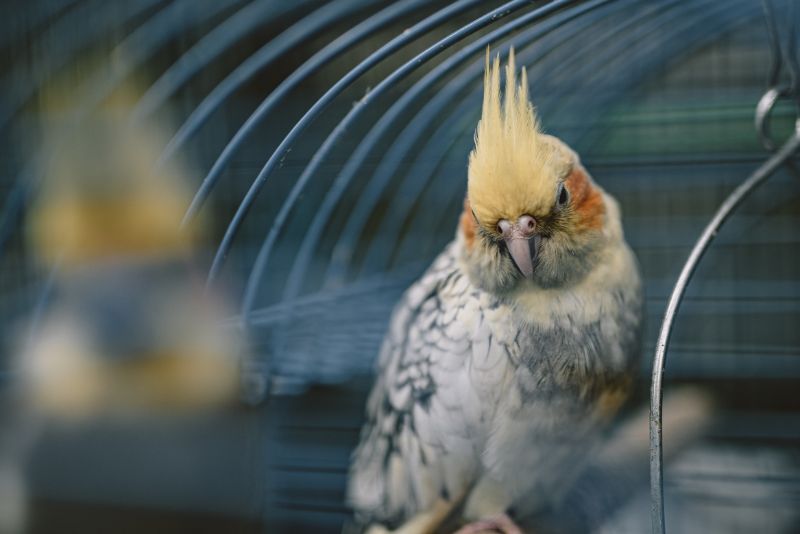
Chart Of Cockatiel Care Basics
Here’s a table outlining some key aspects of cockatiel care:
| Aspect Of Care | Description |
|---|---|
| Diet | A well-balanced diet for cockatiels should consist of a mix of premium seed mix, nutritious pellets, fresh fruits and vegetables, and occasional treats. Seed mix should make up 60-70% of their diet, while pellets should make up 20-30%. |
| Housing | Cage confinement for a Cockatiel must provide ample space for the bird to move about, spread its wings and thrive. A cage of suitable proportions should measure no less than 20 inches in length, 18 inches in width, and 18 inches in height. |
| Exercise | Cockatiels need daily exercise to stay healthy and happy. If Cockatiels don’t get enough exercise they can become overweight, and may develop stereotypical behaviors due to boredom and stress. Providing toys and perches for them to play with and allowing time out of the cage to move around or fly, can help with this. |
| Socialization | Cockatiels are social birds and benefit from interaction with their owners. Spending time with them every day can help strengthen the bond between you and your bird. |
| Grooming | Regular grooming, including regular baths and preening, is important for maintaining the health of your cockatiel’s feathers and skin. Pin feathers are painful and if their is not another bird to mutually groom then the bird may need you to help with grooming. |
Remember, these are general guidelines and the specific care needs of your cockatiel may vary based on factors such as age, health, and individual personality. It’s always best to consult with a veterinarian or a pet bird specialist to determine the best care plan for your bird.
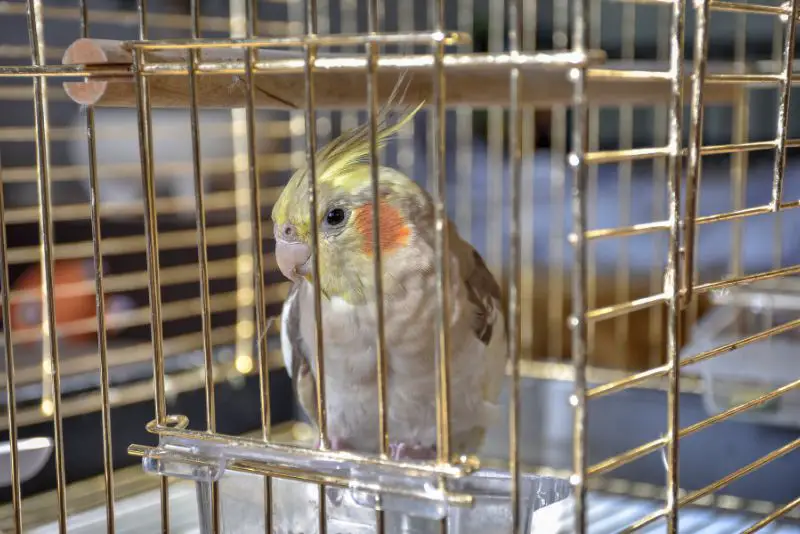
🏠 Finding the Perfect Home: All About Cockatiel Cages
👀 Read Next: How to Set Up a Cockatiel Cage
📏 Size and Material Matter
Choosing a cage is big stuff, guys! Your cockatiel needs room to stretch and play. 🐦 We’re talking at least 20 inches long, 18 inches wide, and 18 inches tall. Got it? More room = happier bird.
Oh, and the bars? Keep them close, like no more than a half-inch apart. This way, your bird won’t play Houdini and slip away.
📍 Where to Put the Cage
Location, location, location! Cockatiels are like us; they hate too much noise and drafts. Find a chill spot, away from direct sun and drafty windows. But also, don’t put them in isolation. They want to see what you’re up to!
🧸 Toys and Perches
Let’s make their cage fun! Get perches of different sizes and materials. It’s like gym class but for their feet. 🐾 Also, toys keep them busy and happy. So, go nuts on the toy aisle.
Water dish? Essential. Food bowls? Yep, those too. And hey, throw in a night light and a comfy cover for bedtime.
🧽 Keeping It Clean
Clean cage = happy bird, period. Wash everything: perches, feeders, and toys with warm soapy water. No one likes a dirty house, right? Also, refresh their food and water daily. A clean home is a happy home, even for your feathered friend. 🦜🧼
There you have it! Make your cockatiel’s cage a happy, healthy, and safe place to chill, and they’ll be your best bud for life. 🌈🏠🦜
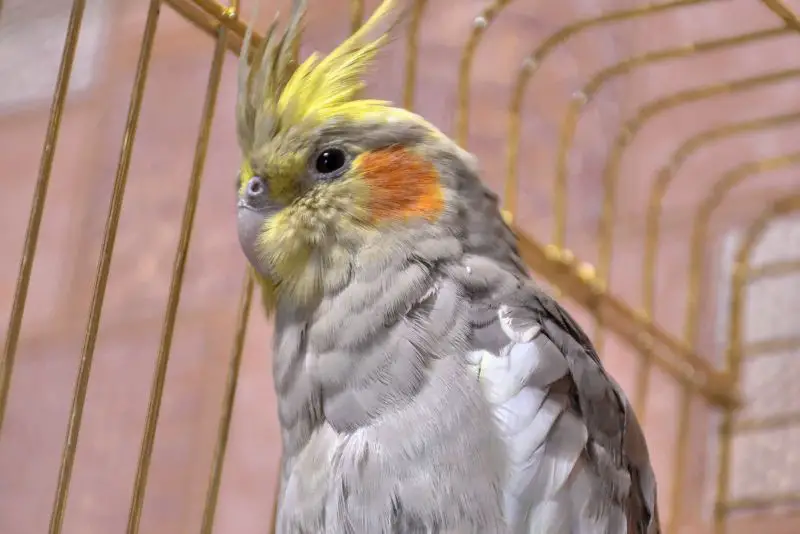
🍽 What’s for Dinner? Cockatiel Diet 101
🥦 Balanced Meals = Happy Bird
What your cockatiel eats is super important, okay? A good mix has seeds, pellets, fruits, and veggies. Seeds? 60-70% of their diet. Pellets? Another 20-30%. And don’t forget to mix up the fruits and veggies to keep things exciting!
🌾 Seeds vs. Pellets: The Showdown
Seeds and pellets are like the bread and butter of bird food. Seeds have lots of vitamins and minerals. Pellets? They’re like an all-in-one meal for your bird. The best plan is to use both! Variety is the spice of life, right?
💊 Vitamins and Supplements
Even with a balanced diet, some extra vitamins won’t hurt. Think calcium for strong bones and vitamin A for good eyesight. It’s like giving your bird a little health boost!
🍎 Fruits and Veggies: Snack Time!
Who doesn’t like a snack? Apples, carrots, spinach—yum! But remember, these are just extras. The main meal should still be pellets and seeds.
🍪 Treats and Human Food: Yay or Nay?
Treats like nuts and dried fruits? Tasty but fattening. Give sparingly! Human food? Mostly a no-go. They don’t mix well with birdie tummies.
⏰ When to Eat: Schedules and Portions
Consistency is key. Keep food and fresh water available, but watch the portions. A schedule makes your bird feel secure, and who doesn’t like feeling secure?
Your bird’s diet matters a lot. Keep it balanced, keep it interesting, and you’ll have a healthy, happy feathered friend. 🦜💖
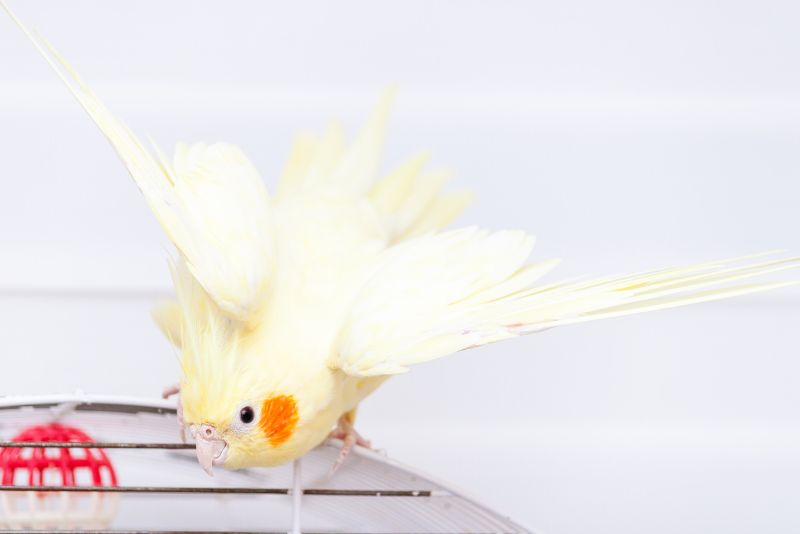
🐦 Cockatiel Health 101: Spotting Trouble and Staying Healthy
🚩 Signs It’s Vet Time
Cockatiels are good at hiding when they’re sick. But you can look for clues. Not eating much? Acting strange? Got fluffed-up feathers or goopy eyes? Big red flags. Don’t try to play vet; if you see these signs, call an actual vet ASAP. They know what to do.
🤒 Common Health Problems: What to Know
Cockatiels sometimes get sick, even when you’re doing everything right. Common issues include breathing problems, fatty liver, and mites. Different problems need different treatments. So, if something’s up, take your bird to the vet. Quick action can really help.
💪 Prevention: Better than Cure
Keeping your cockatiel healthy is actually simpler than you might think. Clean their cage, feed them well, and let them exercise. A chill environment is key too—stress can make birds sick. Prevention is easier and cheaper than treatment!
🏥 Check-Ups: A Must-Do
Don’t skip the vet check-ups! Vets will look over your bird, check their beak, wings, and claws, and give you tips on keeping them healthy. A good vet is like a good friend but for your bird’s health.
So, long story short, pay attention to signs, see the vet for problems and check-ups, and do your best to prevent issues. You and your bird will be better off for it! 🦜💚
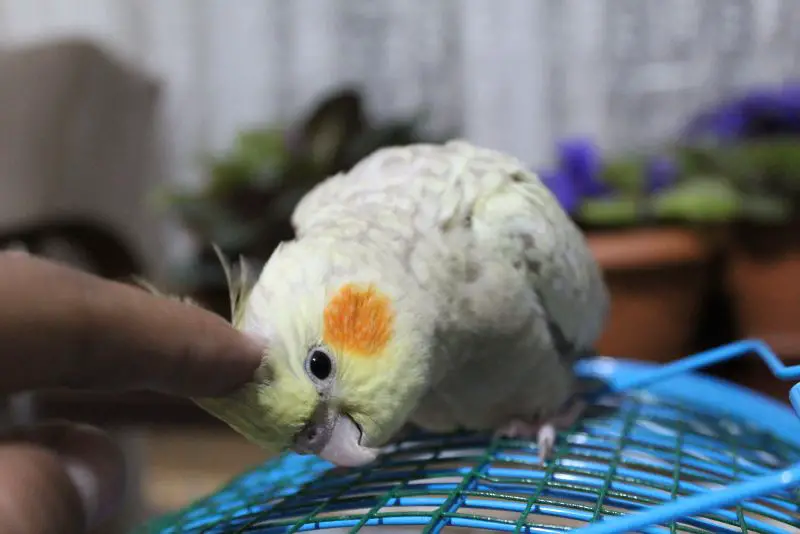
🐦 Cockatiel Behavior and Training: Decode, Bond, Train
🗨️ Understanding Their Talk and Moves
Cockatiels are social birds that love hanging out with humans. They “talk” with body language and sounds. Understanding these helps you bond and spot health issues. Head tilts, fluffed feathers, or chirps are not just cute—they mean something. Pay attention, and you’ll get to know your bird’s moods and health.
👥 Bonding: Daily Hangouts
Quality time with your Cockatiel matters—a lot. It can be chill, like sitting together and giving treats, or more active, like training sessions. Training is not just about commands; it’s a fun time that makes your bird think and strengthens your bond. You both win. The more love you give, the more you get back.
🎓 Basic Training: Simple Commands
Cockatiels are smart. You can teach them commands like “step up” onto a perch. The key? Positive vibes. Give treats or praise when they get it right. Start when they’re relaxed so they’re open to learning. Don’t rush; be patient and consistent. Soon you’ll have a bird buddy who listens to you.
🎵 Body Language and Sounds: A Full Conversation
Cockatiels speak a language of moves and sounds. Feather fluffing can mean they’re scared. Head tilts might show they’re curious. They can even mimic speech and whistles. Look out for these cues. It deepens your bond and helps you meet their needs. When they’re calm and content, you know you’re doing it right.
So, get to know your Cockatiel’s ways of “talking,” spend quality bonding time, and teach them some cool commands. You’ll both be happier and healthier for it! 🦜💕
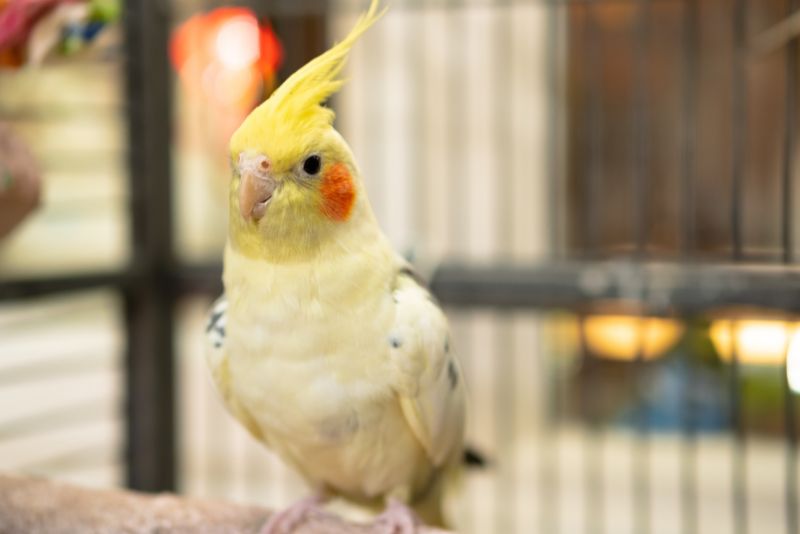
Cockatiel Care FAQs: My Insights on Common Questions 🦜
As a Cockatiel parent, I’ve picked up a good deal of knowledge on their care. Here, I’ll answer frequent questions about caring for these charming birds.
Common Health Problems in Cockatiels?
Cockatiels can face several health issues—feather picking, respiratory and digestive troubles are common. But I often encounter mites, lice, and bacterial and fungal infections. Regular vet check-ups are a must for early diagnosis and treatment.
How to Spot a Sick Cockatiel?
Over time, I’ve learned to spot signs of illness—low energy, appetite loss, feather fluffing, and vocalization or behavior changes. If your bird seems off, consult a vet ASAP.
What’s a Balanced Cockatiel Diet?
Diet-wise, they need seeds, pellets, fresh fruits and veggies, and occasional treats. Variety is key for all essential nutrients. Seeds are okay but shouldn’t be the whole diet.
Cleaning Frequency for Cockatiel Cages?
I clean my Cockatiel’s cage weekly and spot-clean daily. This involves removing waste and old food, plus disinfecting. A clean cage equals a healthy bird.
Can Cockatiels Learn Tricks?
Yes, they can! I’ve trained mine to step up, fly to perches, and mimic sounds. Consistent training and patience are your best friends here.
Safe Human Foods for Cockatiels?
Cockatiels love seeds, but they can enjoy small amounts of safe human food—cooked grains, fruits, and veggies. Just avoid high fat, sugar, or salt items.
Bonding with Your Cockatiel?
To bond, spend quality time getting to know your bird. Talk to them, offer treats, and play games. Consistent interaction strengthens your bond.
Ideal Cockatiel Cage Size?
The right cage size depends on your bird’s size and numbers. As a rule, aim for at least 24x20x20 inches to give them enough space to move and stretch their wings.
I hope this clarifies some of your Cockatiel care queries! 🐦💕
🏁 Conclusion: The Recipe for a Happy Cockatiel 🦜
Based on my years with my own Cockatiels, I can vouch for the fact that proper care is key. A balanced diet, exercise, and a clean space make for a healthy, happy bird. But that’s not all. Learning their behaviors and training them enriches your bond.
Don’t forget vet check-ups. Early problem-spotting means a healthier, longer life for your bird. So, invest the time and care—it’s worth it. You won’t just have a pet; you’ll have a loyal, loving buddy for years to come. 🐦💖
What are you going to change for the better in your cockatiel’s care? Let us know in the comments!
-Kacey
P.S. Did you like this article? Fly on over to:
- All About Cockatiel Birds: A Comprehensive Guide
- How to Set Up a Cockatiel Cage
- Why Pelleted Diets are Essential for Cockatiels
- Cockatiel Pellets: Top Choices for a Healthy Diet


